One of the my favorite things about winter is its spectacular beauty. Whenever snowy weather is accompanied by sunshine, I want to be outside taking winter pictures with my iPhone. And it doesn’t matter how cold the weather is.
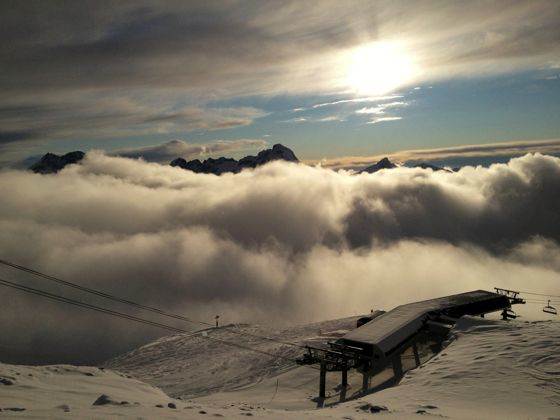
In this article I’ll share 10 simple techniques that will make your winter photos look spectacular. With the cold taking over much of Europe and North America, this is the perfect time to go out and take some stunning winter photos with your iPhone.
Show How Cold It Is
The best photos make the viewer experience the same things as you did while taking the photo. So if you were freezing cold while taking the shot, try to show it in the photo as well. This can be done in strong wind and blizzard conditions as seen below.

In this photo the wind-blown snow is highlighted by the light shining through it, which contrasts nicely with the relatively dark background. If you want your photos to look cold, also make sure to edit them that way. Create dark black and white photos, increase contrast and use cold colors. You want to make audience cold just by looking at the photo.
Capture Long Shadows
One of the best things about winter light is that the sun stays low throughout the day. This leads to unusually long shadows, which can add a more dynamic look to your photos. The trick is to make shadows a central part of your composition, just like it’s done in the photo below.
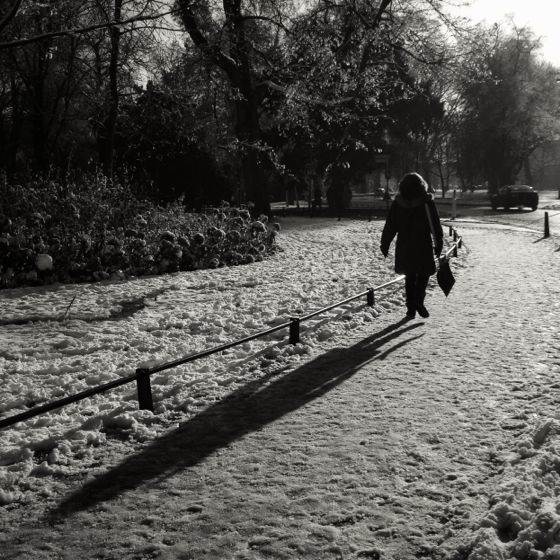
Create Silhouettes
The low winter sun also makes it very easy to create silhouettes with your iPhone. As long as you shoot against the sun, your subjects will turn into dark, beautiful silhouettes. In the summer this only works in mornings and evenings when the sun is low, but in winter you can also create silhouettes throughout the day.
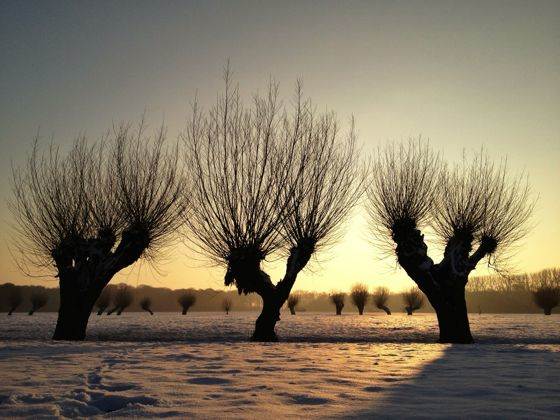
Another nice thing about creating silhouettes in your winter photos is how well they contrast with the bright tones of snow and ice that probably take up large parts of your photos.
Don’t be Afraid of the Sun
If you get sun inside your iPhone’s camera during the summer, the chances are that your photo will be ruined. It will usually get a purple tint and also look bad otherwise. However, you don’t necessarily have to avoid the sun in your winter photos. The sun is much weaker in the winter, especially if it’s partially occluded as in the photo below.

Give Scale to Mountain Photos
The human eye tends to underestimate the immensity of mountain vistas it sees in pictures. Therefore it’s always a good idea to include something in the foreground that puts the scenery into perspective. It could be a person or some human-made object as seen in photo on the top of this article.
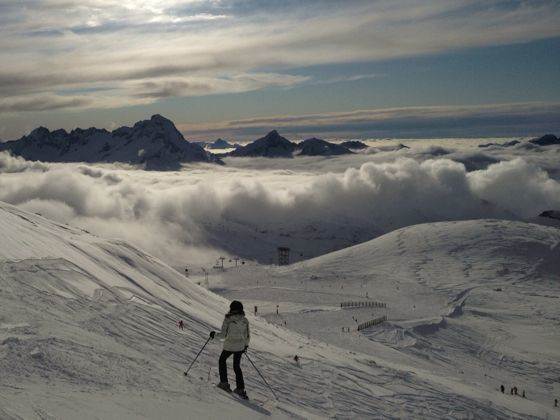
Look for Unusual Details
While this tip applies to photography all year long, I’ve also used it to take some pretty unique winter photos. The trick is to always be on a lookout for something interesting and unusual, something that you could tell a story about. Look at the photo below. I didn’t create this snow heart, but when I came across it on a cold, windy December afternoon, it really made my day.
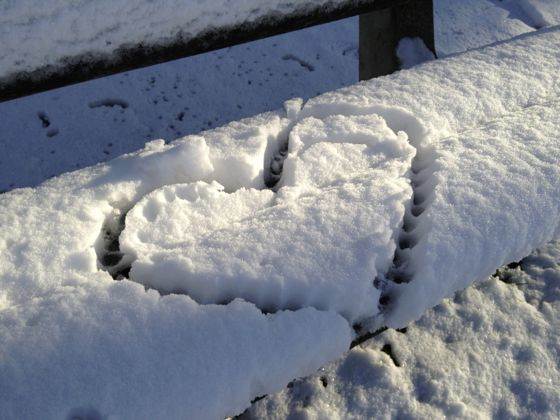
Or consider the photo below. It instantly tells a weird, funny and somewhat sad story about the misfortunes of a fellow bike owner. And yes, this could only happen in the Netherlands.
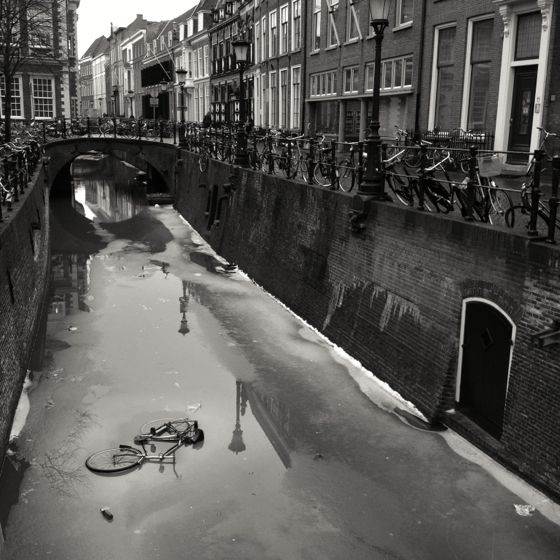
Use Reflective Surfaces
In most situations all the light you see in a photo comes from the sky. However, some surfaces such as ice and wet tarmac reflect most of the light that reaches them. This can be used to create really unusual photos in which the surface is literally shining out of the photo.
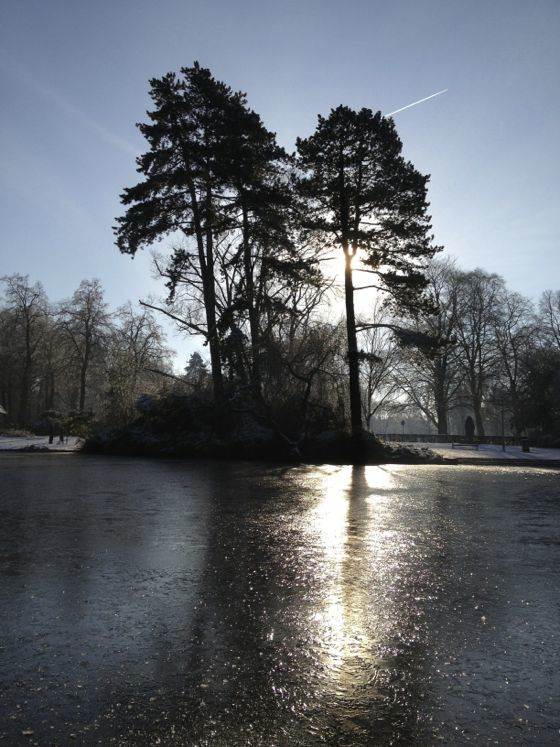
This can also be done in the summer, of course, when light is reflected from the surface shortly after rain. However, normally the surfaces dry up almost immediately, but in the winter they can stay wet for days as long as there is melting snow nearby.

Get Closer to The Ground
If there is one thing that makes winter photography special, it’s probably snow. So why not make it a central part of your photo by getting closer to the ground? This will also create a lot more dynamic perspective as seen in the photo below.
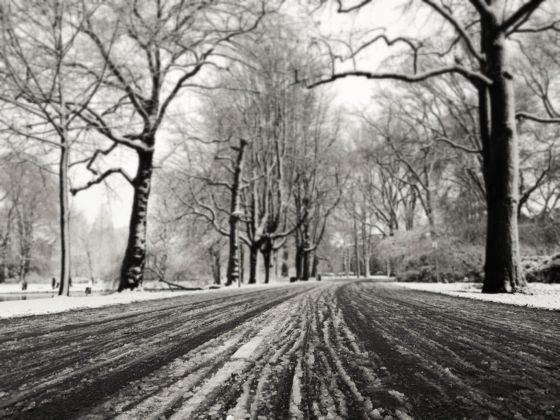
Note that in this photo I have used Snapseed’s tilt shift feature to slightly blur the trees in the background. That way I can draw reader into the photo and let him follow the slush-covered road.
Go Black & White
As you have probably noticed already, many of the photos in this article, particularly the ones that are taken on cloudy days, are black and white. On cloudy and snowy days there is a lot of light going in all directions which usually results in bland, grayish photos.
One way to get around this is to make your photos black and white. They will almost always look better that way, especially if you also increase contrast and adjust brightness. I often also increase white balance a little (Tune Image section in Snapseed) to give my photos a different feel.
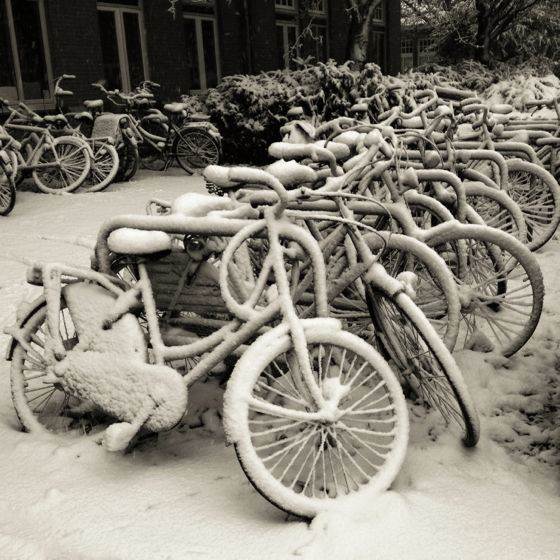
Don’t Let the Cold Destroy Your iPhone
Apple conservatively advises that you only use your iPhone when the temperatures are above freezing. None of the photos above could be taken if I actually followed that rule, so don’t let that stop you. The chances are that your fingers will get insanely cold way before your iPhone develops a problem.
From my own experience I can say that it’s generally safe to use your iPhone in -10 degrees celsius (14 Fahrenheit), but I would be very careful to use it in -20 celsius (-4 Fahrenheit).When you do use your iPhone in the cold, it’s important to warm it up again gradually to avoid internal condensation that could damage the electronics.
Another thing to consider is how cold affects your battery performance. In the cold your iPhone may turn off due to insufficient charge even when the battery is still at 35%. You don’t really have to worry about this as your battery will go back to normal as soon as the phone is warm again. However, if your are going to shoot in low temperatures, you want to make sure that you battery is full.
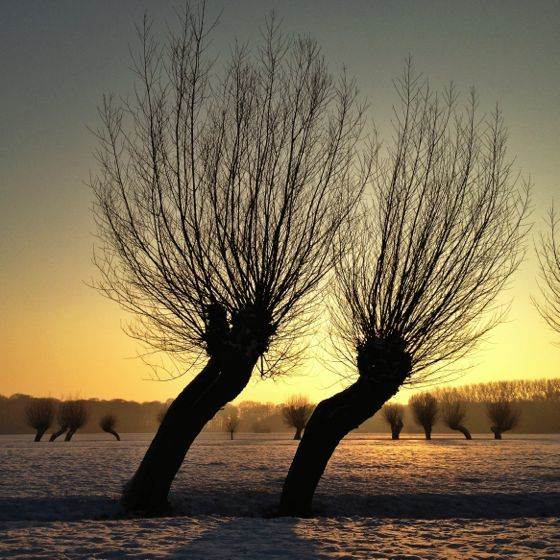

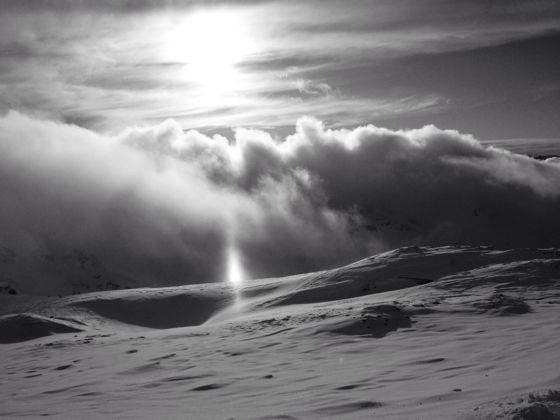

It’s great to find some new tips and not just the usual rule of thirds, leading lines etc. zzz. Thanks for sharing. I thought your readers might find this article helpful if anyone gets a chance to visit Wales. http://dioni.co.uk/landscape-photography-in-snowdonia-top-10-locations/